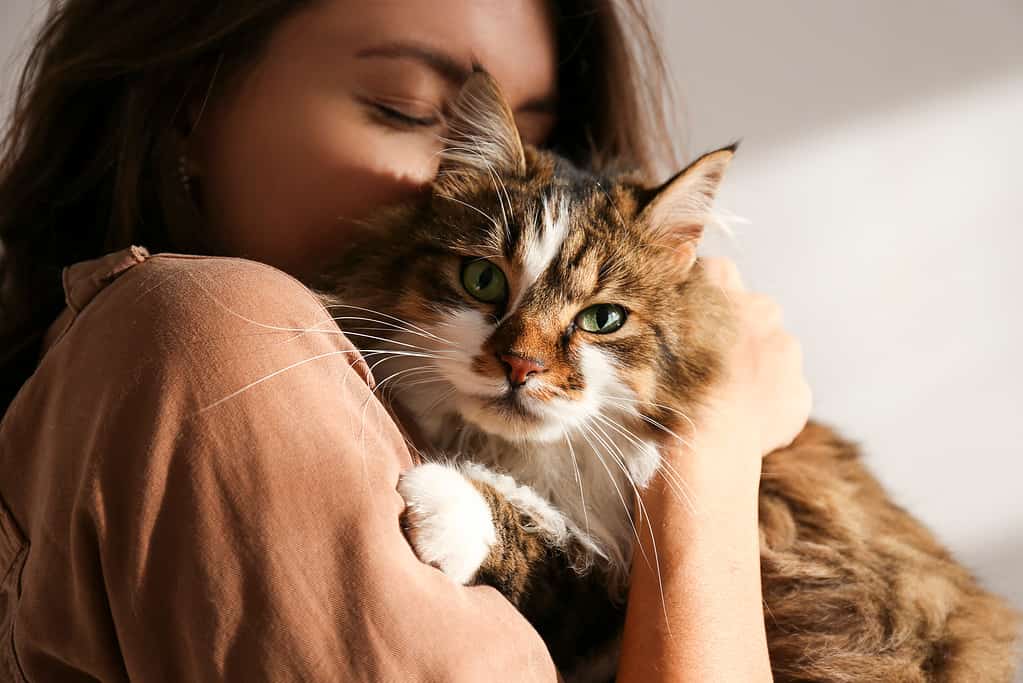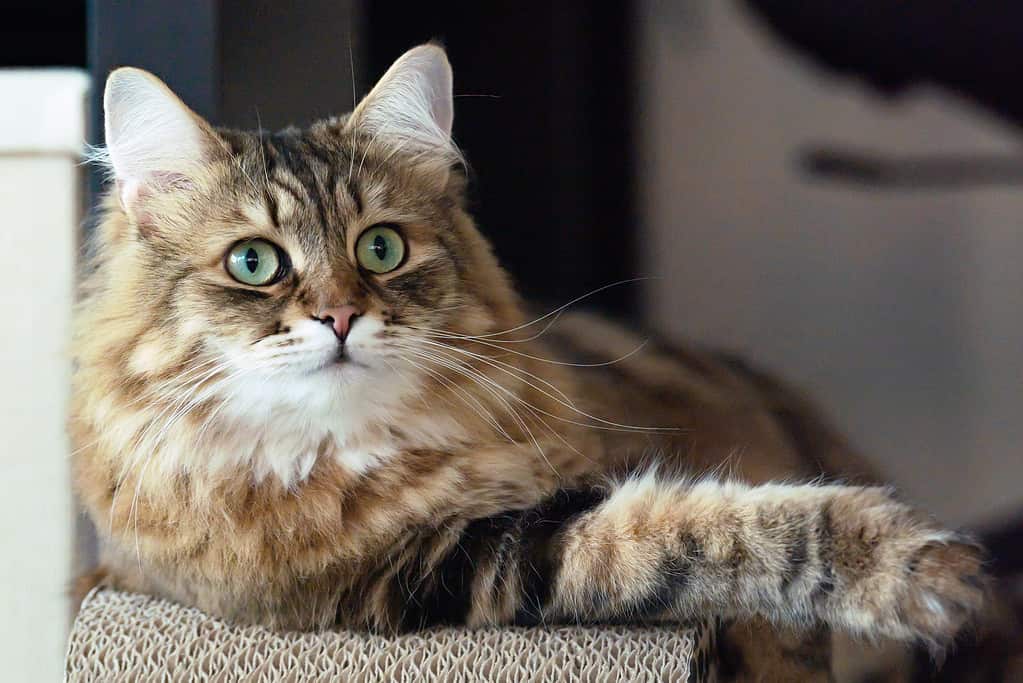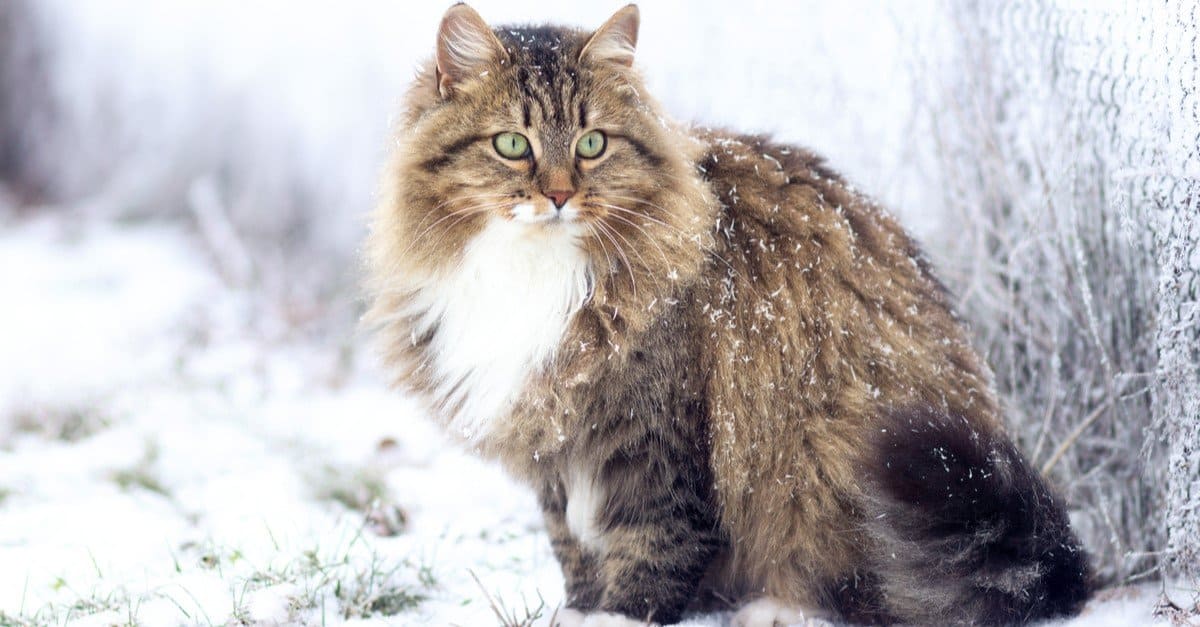Their appearance alone is impressive, especially when their fur is fluffed out. But how big do Siberian cats get? Discover the average size of this large kitty and learn about their growth milestones!
What Is a Siberian Cat?
Siberian cats are semi-longhaired large cats with luxurious coats that make wonderful companions. Their personalities are friendly, and they are eager to show their affection. They’re both curious and loyal and bond well with their human counterparts. Not only do they make a great addition to the home, but they are strikingly beautiful. Enough to be a show cat!
These cats are from the Siberian region of Russia, hence their name. Their lavish coat is long and thick, which allows them to thrive in cold environments like the forests in Russia they have long inhabited. Their coat colors vary both in color and pattern. One reason these cats are popular is because they have less Fel d 1 protein, which is the culprit that leads to severe allergies.

Siberian cats are allergy-friendly, with many reports of people experiencing reduced allergy symptoms around them.
©evrymmnt/Shutterstock.com
Though not entirely hypoallergenic, those who are typically allergic to cats don’t have as many allergic reactions around Siberian cats. Aside from their coats, these cats grow larger than others, which only adds to their royal appearance. Those who own these cats get to enjoy them for well over a decade, on average, as they have a life expectancy of 12 to 20 years.
How Big Do Siberian Cats Get?
With their muscular build and dense coat, Siberian cats have an impressive look. As adults, they range in weight between 15 to 20 pounds. They’re hefty! Males are usually bigger than females. On average, these cats measure 17 to 25 inches long from nose to tail. Since they have such a dense coat, they appear even larger.

Adult Siberian cats range in weight between 15 to 20 pounds.
©iStock.com/Julia Gomina
Siberian Cat Growth Milestones
A Siberian cat’s growth milestones are much like that of other cat breeds; however, since they are larger cats, they take a little while longer to reach their full size. Here’s a breakdown of a Siberian cat’s first year:
First Six Months
From birth to two weeks, Siberian cats are blind. They are highly dependent on their mothers for their survival, who cares for them and feeds them.
From two weeks to four weeks, Siberian kittens start to open their eyes as well as their ears, which grants them an opportunity to examine their environment with their developing senses. They start wobbling about in their attempts to walk.
From three to four weeks, Siberian kittens experience another transition. No longer solely dependent on their mother’s milk for sustenance, they start transitioning to more solid cat food. They may still suckle and drink their mother’s milk, but they start to explore moistened cat food options, nibbling as they do.
From six to eight weeks, kittens are no longer wobbling about and have mastered walking. At this stage, they are mingling with their littermates and their humans. This is a crucial period that ensures proper socialization.

Siberian kittens take up to a year to grow to their full size.
©Just-Mila/Shutterstock.com
From two to four months, the Siberian kitten’s development is in full swing. You can see their baby teeth emerge and their personalities start to shine. This is when you notice their curious and playful temperament the most as they start to explore their environment more.
Next Six Months
From four to six months, kittens are teething, losing their tiny baby teeth to make room for their adult teeth. Sometimes they drool more, chew excessively, and you might even notice missing teeth! That just means your kitty is developing beautifully.
From six to nine months, the majority of Siberian cats have reached their adult size. This means their personality is shifting to a much more stable state. They may still behave kitten-like on some occasions with spurts of playful energy, but you’ll notice they’re more settled overall.
From nine months to 12 months, Siberian cats have reached adulthood. Despite this important milestone, some Siberian cats may continue developing and maturing over the course of the following months following their first year of life.
Siberian Cat: Adult Life Stage
The rate your Siberian cat grows depends on several factors, including their genetics. To support the development of a Siberian kitty, it’s vital you provide them with a nutrient-dense diet and take them to the vet for regular check-ups. Additionally, it’s crucial for their emotional well-being that they are properly socialized. The first year of their lives is critical and so long as you support their growth in a stimulating environment, you can enjoy a happy and healthy adult cat.
Thank you for reading! Have some feedback for us? Contact the AZ Animals editorial team.








